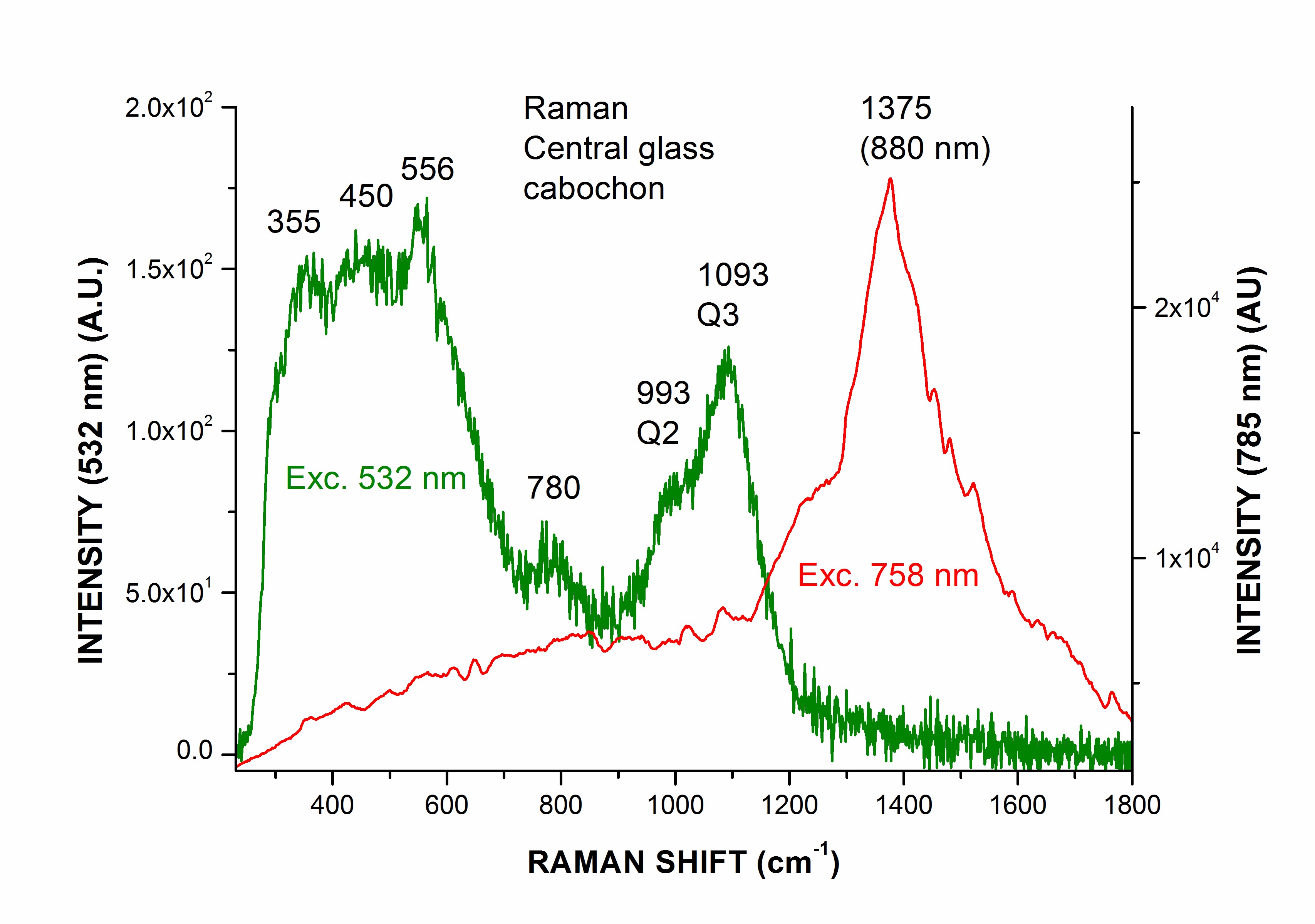matEriaux du patrimoine culturel
Membre permanent: G. Panczer (Pr)
Collaborations: Anne Pillonnet, Cécile Le Luyer-Urlacher, Amina Bensalah-Ledoux (ILM, équipe MNP), Davy Carole (LMI, IUT Lyon 1)
Notre expertise en spectroscopie vibrationnelle, de photoluminescence et d’absorption ainsi que le développement d’équipements portatifs nous a amenée à être régulièrement sollicité pour la caractérisation sur site d’objets du patrimoine culturel. Le partenariat étroit établi avec d’autres équipes de l’ILM, en particulier l’équipe MNP Matériaux et Nanostructures Photoniques, et le Laboratoire Multi-Matériaux et Interfaces (LMI) de l’université Lyon1, nous a amené à la mise en place d’un réseau lyonnais de caractérisations spectroscopiques sur site des matériaux du patrimoine culturel, baptisé PRISM.
Equipements :
- Spectromètres Raman Ocean Optics (excitation 532 et 785 nm)
- Spectromètre d’absorption VIS-IR Ocean Optics
- Analyseur fluorescence X (XRF) XL3T GOLDD+ (mode minerais et métaux précieux)
- Réfractomètre, polariscope
- Testeur diamants
- Lampe UV (365, 254 nm)
- Trinoculaire HRD, Microscope USB.
First spectroscopy and gemological characterization of the Talisman of Charlemagne (Reims, France)
Gemological examination by the present authors has made it possible to propose the geographic origin of the colored stones. Most of the garnets appear to come from southern India or from Ceylon, except one garnet of presumably Bohemian origin. The large blue-gray sapphire in the center is assumed, based on its inclusion and spectral features, to originate from Ceylon. The emeralds probably originate from Djebel Zabara (Egypt), except for one that is presumably from the Habachtal region of Austria. With this interpretation of our data, we suggest that emeralds from Egypt have entered the trade along ancient trade routes since at least the Middle Age (i.e., prior middle to late ninth century, when the Talisman of Charlemagne was made), if not even earlier. The substitution of the large gemstone in the front by a glass cabochon probably would have occurred at the end of the eighteenth century and certainly before 1843. The center sapphire’s weight is estimated at approximately 190 ct (38 grams), which represents a substantial portion of the reliquary’s total weight of 163 grams. This sapphire, having undergone no treatments such as heating, is to our knowledge one of the largest used in historical jewelry before the seventeenth century.


Talisman de Charlemagne et spectres de caractérisation par spectroscopie Raman

















